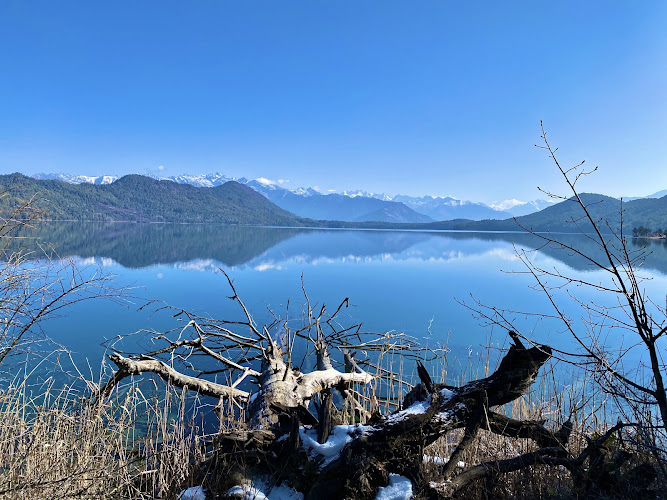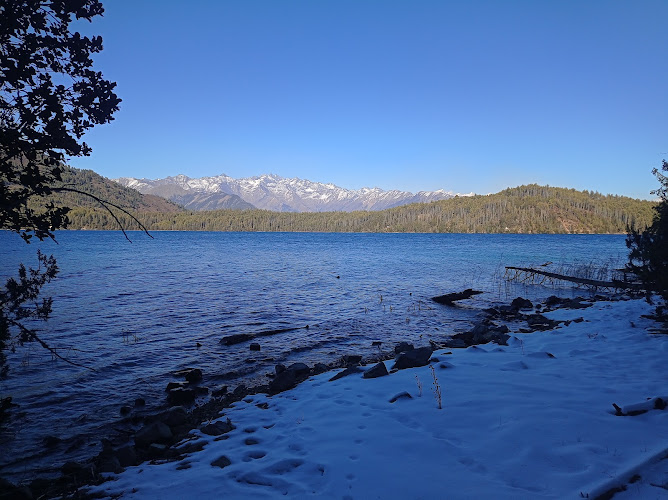


Rara National PARK - Nepal's Largest Alpine Lake & Pristine Wilderness
G3FH+GGX Rara Lake, Rara 21100
Hidden in the far-flung reaches of Nepal's Mugu district, where the Himalayas fold into their most secretive corners, Rara National Park guards what might be the country's most spectacular natural treasure: a crystalline alpine lake so remote that reaching it feels like discovering a world that time forgot. At 2,990 meters above sea level, Rara Lake stretches across 10.8 square kilometers of impossibly blue water, making it Nepal's largest lake and the centerpiece of the country's smallest national park, a 106-square-kilometer wilderness established in 1976 that protects one of the Himalayan region's last truly pristine ecosystems.
The journey to Rara reveals why this destination remains Nepal's best-kept secret. Unlike the well-trodden trails to Annapurna or Everest Base Camp, the path to Rara demands commitment. Most visitors fly from Kathmandu to Nepalgunj, then catch a small aircraft to either Talcha Airport—where a three-to-four-hour trek through photogenic alpine forests leads to the lake—or to Jumla, which requires a four-day walk through remote Himalayan valleys. The adventurous can opt for a grueling two-day bus journey to Gamgadhi, the Mugu district headquarters, followed by a five-hour hike. This accessibility challenge acts as a natural filter, ensuring that those who make the pilgrimage arrive with genuine appreciation for wilderness solitude.
The numbers tell a story of superlatives. Rara Lake plunges to a maximum depth of 167 meters, making it not only Nepal's largest but also one of its deepest lakes. Measuring 5.1 kilometers in length and 2.7 kilometers across at its widest point, the lake sits cradled in a natural amphitheater surrounded by coniferous forests and peaks that soar to 4,039 meters at Chuchemara Peak. In September 2007, international recognition arrived when Rara was designated a Ramsar site, acknowledging the 1,583-hectare wetland's critical importance to global biodiversity.
What makes Rara extraordinary isn't just its size but its biological uniqueness. The lake harbors three endemic fish species—the Nepalese snowtrout and the Rara snowtrout, which exists nowhere else on Earth. This isolation has created an evolutionary laboratory where species adapted to conditions found in no other water body. The surrounding park supports an ecosystem of 1,074 plant species, including 16 endemic to Nepal, from towering Himalayan cypress and West Himalayan spruce to black juniper, oak, and the crimson rhododendron that blankets the hillsides in spring with Nepal's national flower.
For wildlife enthusiasts, Rara National Park offers encounters that rival any protected area in the Himalayas. Among the 51 mammal species roaming these forests, the elusive red panda represents the park's most sought-after resident. These endangered creatures, which feed extensively on Thamnocalamus bamboo found throughout the park, share the terrain with Himalayan black bears distinguished by crescent-shaped white chest markings, musk deer whose distinctive scent glands and shy nature make them perfectly adapted to high-altitude environments, and Himalayan tahr navigating impossible cliff faces. Yellow-throated martens streak through the trees, while gray langurs and rhesus macaques chatter in the canopy. Indian leopards, jackals, dholes, and otters complete a predator-prey dynamic that has functioned undisturbed for millennia.
Birdwatchers find themselves in paradise, with 241 recorded species including 49 wetland specialists that depend on the lake's aquatic ecosystem. The combination of alpine, subalpine, and wetland habitats compressed into this compact park creates avian diversity that rewards patient observation.
Timing a visit to Rara requires understanding the dramatic seasonal transformations that define this high-altitude environment. Spring, from March through May, transforms the landscape as mild weather coaxes rhododendrons into explosive bloom, painting mountain trails in shades of red, pink, and white against a backdrop of crystal-blue lake water and clear skies. But autumn, from September through November, offers Rara at its most photogenic. The forests surrounding the lake ignite in shades of gold, amber, and crimson, creating mirror-perfect reflections on the lake's glassy surface. Dry weather and cloudless skies reveal the full Himalayan panorama, including views of the Kanjirowa and Saipal peaks that define the western Nepal skyline.
Winter brings a different beauty—snow blankets the region, the lake partially freezes, and temperatures plummet—but also isolation that borders on complete. The monsoon months from June through August render the region nearly inaccessible, with prolonged rains creating muddy trails and triggering landslides that make travel hazardous.
The human dimension adds cultural depth to Rara's natural splendor. The park provides intimate glimpses into Thakuri and Chhetri communities who have carved lives from this demanding landscape for generations. The nearest village, Murma, serves as the park headquarters and offers interactions with local people whose traditions and warm hospitality provide counterpoint to the wilderness. The lake holds spiritual significance for these communities, particularly the Thakuri people who consider it sacred and have woven legends around its formation. Agriculture and animal husbandry sustain local economies, though emerging homestay programs now allow visitors authentic cultural experiences while providing income that incentivizes conservation.
History shadows this pristine landscape. Two villages—Rara and Chhapru—once existed within park boundaries until residents were controversially resettled to Banke district to reduce human impact on the ecosystem, a decision that still sparks debate about conservation ethics and indigenous rights.
Why does Rara remain less visited than Nepal's celebrity national parks? The answer lies in that very remoteness that defines its appeal. While Chitwan's jungles sit hours from Kathmandu by road and Sagarmatha draws Everest pilgrims by the thousands, Rara demands days of travel and acclimatization to high altitude. There are no luxury lodges, no well-marked highways, no crowds posing for the same Instagram shots. What awaits instead is something increasingly rare in our hyperconnected world: genuine wilderness, where the only sounds are wind through pine forests, the call of Himalayan birds, and the gentle lap of pristine water against ancient stone. For those willing to make the journey, Rara offers not just Nepal's largest lake, but something infinitely more valuable—a glimpse of the Himalayas as they existed before the world discovered them.
Park Features & Amenities
🏃 Activities
- ✓ Hiking
🏗️ Amenities
- ✓ Picnic tables
- ✓ Public toilet
🎠 Children
- ✓ Good for kids
- ✓ Kid-friendly hikes
🐕 Pets
- ✓ Dog park
- ✓ Dogs allowed
Visitor Information
🕐 Best Times to Visit
Spring (Mar-May): Pleasant weather, blooming flowers
Autumn (Sep-Nov): Clear skies, comfortable temperatures
Early Morning: Best for wildlife viewing and photography
🗺️ Getting There
By Car: G3FH+GGX Rara Lake, Rara 21100
Public Transport: Local buses and taxis available
Walking: Check distance from city center
💡 Visitor Tips
• Bring water and sun protection
• Wear comfortable walking shoes
• Check weather conditions before visiting
• Bring camera for nature photography
Explore More in Nepal
Nearby Attractions
Popular Activities
Ready to Visit Rara National PARK?
Plan your visit to this amazing destination with our comprehensive travel guide and insider tips.
Seasonal Travel Guide
Weather & Best Time
Winter brings cool temperatures (5-15°C) with clear skies and snow-capped peaks. Perfect for mountain views but cold at higher altitudes.
Best Activities:
- Mountain viewing
- Cultural experiences
- Spa and hot springs
- Photography of snow peaks
- Indoor cultural activities
Travel Tips
- Visit during December-February for snow-capped views
- Pack warm clothing for cold temperatures
- Book hotels with heating facilities
- Plan for shorter daylight hours
Packing Suggestions:
- Warm winter clothing
- Thermal layers
- Warm hat and gloves
- Sturdy winter boots
- Hot water bottle
Quick Facts
Best time: Autumn (Sep-Nov)
Duration: 1-3 days
Difficulty: Easy
Cost: Budget-friendly